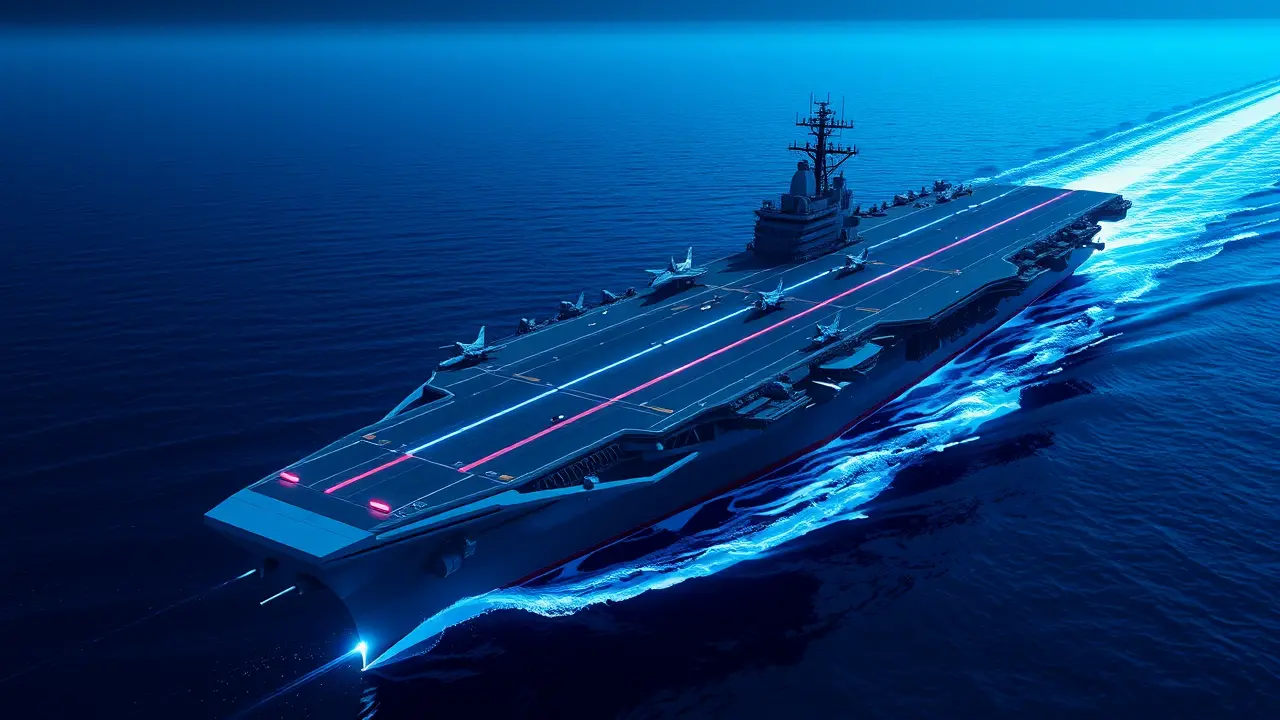
Politicsconflict & defenseMilitary Operations
US Aircraft Carrier Group Arrives in Caribbean for Operations.
OL
Oliver Scott
4 hours ago7 min read1 comments
The arrival of the US Navy's Gerald R. Ford aircraft carrier strike group in the Caribbean is not merely a routine naval deployment; it is a calculated geopolitical maneuver with profound implications for regional security architecture and great power competition.As the world's largest and most advanced warship, the Ford represents a quantum leap in naval aviation, a $13 billion floating fortress whose electromagnetic catapults and advanced weapons systems are now being projected into a hemisphere Washington has long considered its strategic backyard. This deployment must be understood within a broader, more urgent context: a deliberate signal to adversaries, both state and non-state, at a time of escalating global instability.The Caribbean, often viewed through a lens of tourism and trade, is a crucial maritime chokepoint, a gateway for 40% of US container traffic and a historical conduit for illicit flows of narcotics, weapons, and people. The presence of a Carrier Strike Group (CSG), a formation that typically includes a guided-missile cruiser, several destroyers, and a carrier air wing of over 60 aircraft, fundamentally alters the local balance of power.Analysts at the Center for Strategic and International Studies suggest this move is a direct response to heightened military cooperation between Russia and Venezuela, including recent port visits by Russian naval vessels, and China's deepening economic and infrastructural investments across Latin America, which the Pentagon views as a form of 'debt-trap diplomacy' designed to secure strategic influence. The Ford CSG's capabilities are staggering; its air wing can establish near-total air dominance over millions of square miles, while its escort vessels provide a layered defense network capable of intercepting everything from ballistic missiles to swarming fast-attack craft.This is not just about showing the flag; it's about demonstrating an ability to conduct sustained, high-intensity operations far from home, a core tenet of the Navy's Distributed Lethality concept. The risk calculus here is multi-faceted.On one hand, it reassures regional partners like Colombia and Jamaica of American commitment, potentially deterring external meddling. On the other, it risks escalating tensions, potentially pushing Caracas or its allies into more provocative actions, creating a classic security dilemma.Furthermore, the deployment tests the Ford-class itself; this is its first major operational test in a potentially contested environment, and any technical hiccups with its new systems would be noted keenly in Beijing and Moscow. The historical precedent is clear: from the Cuban Missile Crisis to the 1983 invasion of Grenada, US carrier groups in the Caribbean have been unambiguous instruments of national policy.Today's mission is more nuanced, a high-stakes game of chess played on a liquid board, where the immediate objective may be counter-narcotics or freedom of navigation patrols, but the overarching goal is to reaffirm hemispheric primacy in an era where American dominance is no longer a given. The silent, nuclear-powered passage of the Ford through the warm Caribbean waters is a statement written in steel and sea power, one whose full consequences will unfold in the diplomatic cables and war games of rival capitals.
#US Navy
#Gerald R Ford
#Caribbean
#military deployment
#naval operations
#featured
Stay Informed. Act Smarter.
Get weekly highlights, major headlines, and expert insights — then put your knowledge to work in our live prediction markets.
© 2025 Outpoll Service LTD. All rights reserved.